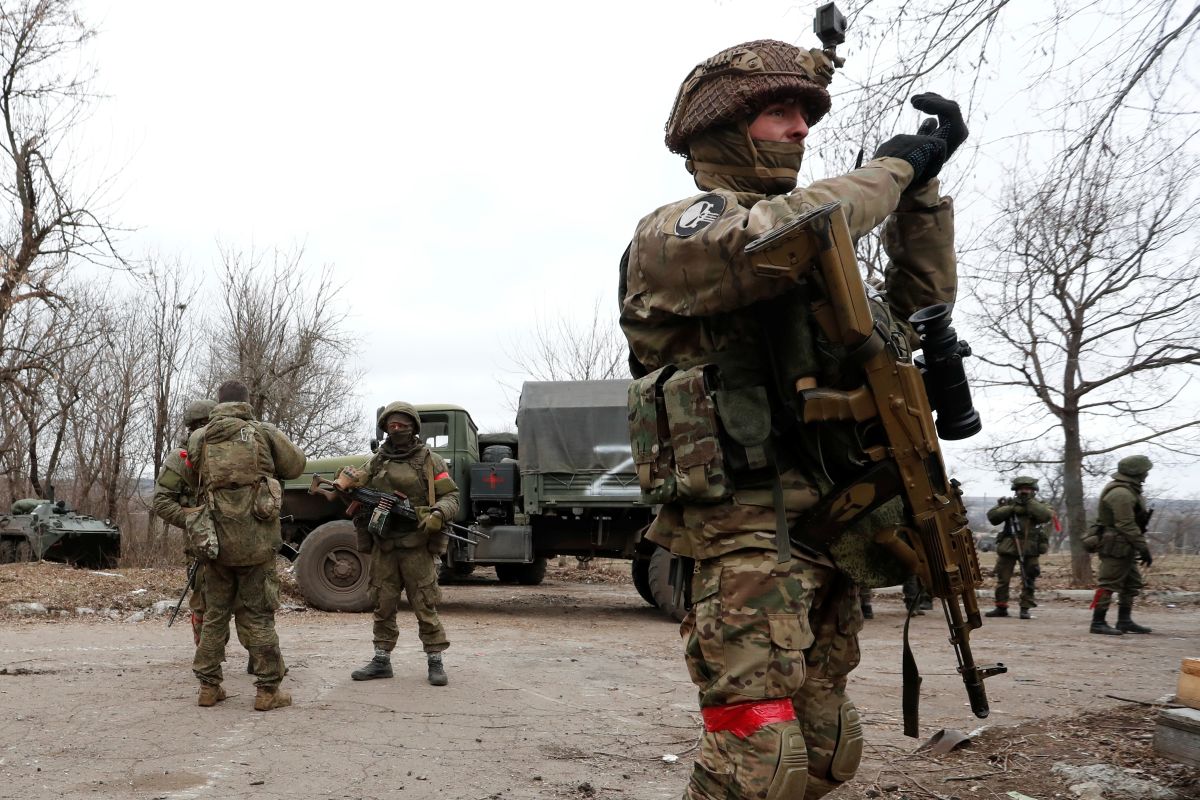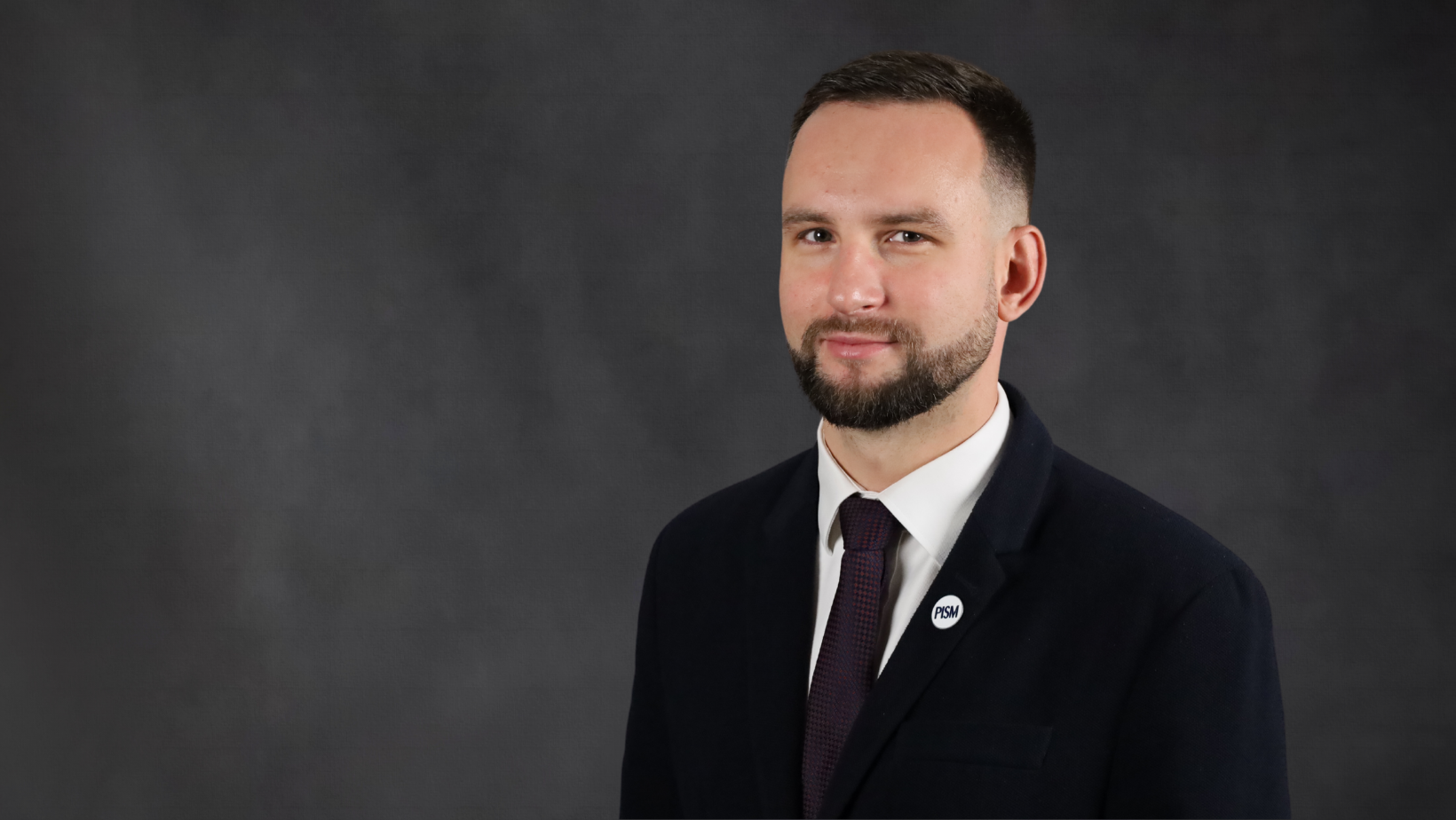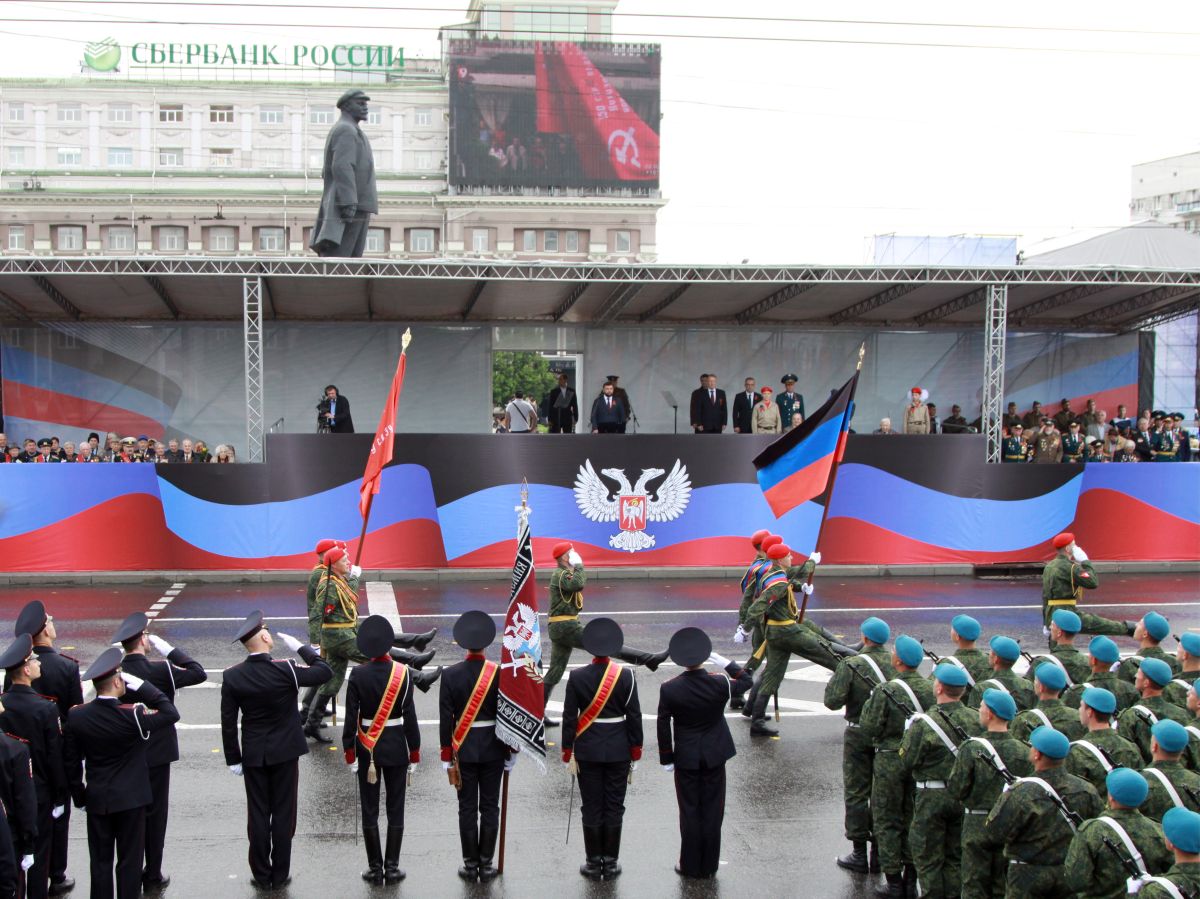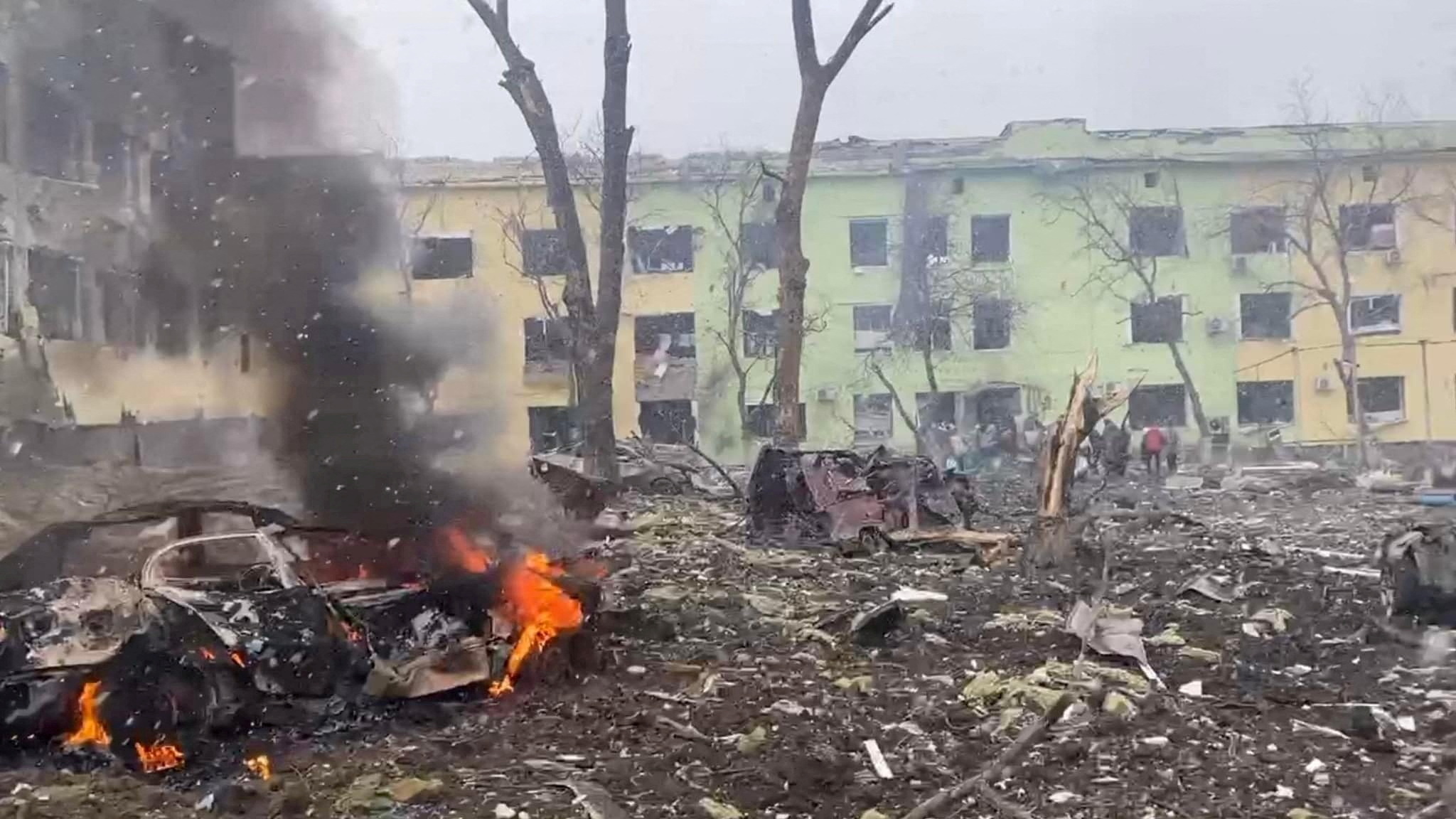The Involvement of Irregular Armed Groups in the Russian Invasion of Ukraine
The Russian armed forces involved in the war against Ukraine are supported by separatist forces, Chechen Rosgvardia units, and mercenaries from the Wagner Group. Before the invasion, Russia used these proxy forces to destabilise Ukraine, while denying direct involvement in the conflict. The irregular forces are now carrying out operational tasks supporting and securing Russian regular troops. The West has limited options to counter Russia’s use of such formations but can activate legal instruments to strengthen international criticism of the Russian government.
 ALEXANDER ERMOCHENKO/ Reuters/ FORUM
ALEXANDER ERMOCHENKO/ Reuters/ FORUM
The Role of Irregular Forces Prior to the Invasion
Between 2014 and 2021, Russia used proxy forces (not formally part of the Russian armed forces) to destabilise Ukraine and influence its politics. Russia’s aim was to maintain plausible deniability of direct involvement in the conflict in Donbas. Separatist troops, described as forces of the so-called People’s Republics (Donetsk and Luhansk, DNR/LNR), were formed in 2014 by Russian intelligence and special forces, which exercise operational control over them. They consisted mainly of local security structures (infiltrated by Russian special services) and about 12,000 so-called volunteers — people with experience in the army, Interior Ministry forces, or security services sent to separatist-controlled parts of the Donetsk and Luhansk regions by Russian intelligence. Private military companies, including the Wagner Group, linked to Russian military intelligence (GRU) and EU-sanctioned oligarch Yevgeny Prigozhin, were used to recruit, train, and transfer them into the warzone. Chechens sent by the leader of the Chechen Republic, Ramzan Kadyrov, also fought in the separatist structures as part of the “Vostok” battalion.
In 2014, the separatists’ task was to provoke protests (“anti-Maidan”), occupy local public administration buildings, and conduct combat operations against Ukrainian volunteer battalions. In 2014-2015, the separatists, supported by Russian regular forces not wearing insignia, conducted military operations to expand the DNR/LNR territories, eventually occupying about one third of the Donetsk and Luhansk oblasts. In subsequent years, these troops have been transformed into an army with about 34,000 personnel with heavy equipment supplied by Russia. Before the invasion on 24 February this year, the clashes along the “contact line” did not lead to a significant change in the operational situation. Russia used the activity of separatists mainly to destabilise Donbas and exert pressure on the Ukrainian authorities. This is evidenced by data from the UN High Commissioner for Human Rights (UNHCR), according to which by the end of January 2021 the total number of casualties on the separatist side amounted to 5,700, while losses on the Ukrainian side amounted to 4,150. In early 2022, Russian intelligence and special forces carried out a series of armed provocations and disinformation activities in Donbas to justify Vladimir Putin’s decision to “recognise” the People’s Republics and launch an attack on Ukraine.
Separatists’ Operational Tasks
Since the beginning of the invasion, the separatists have been operationally supporting the Russian offensive to the east and south. During the first days of the invasion, these troops had serious difficulties in breaking through Ukrainian defensive positions. However, after more than a month of fighting, they managed to take control of 93% of the Luhansk region and 54% of the Donetsk region. The LNR forces continue to assault Severodonetsk, while DNR troops support the siege of Mariupol. According to Ukrainian military intelligence (GUR), separatist troops are suffering heavy losses in personnel and equipment. The DNR authorities maintain that by the end of March, they 767 soldiers had been killed and more than 3,500 had been wounded. In reality, the losses may be much greater than that, as evidenced by the DNR/LNR announcement of the mobilisation of all men between the ages of 18 and 65. Such recruits are untrained, have low morale, and lack determination to fight, which results in their low combat value. To support the offensive, Russia has also deployed to Donbas around 2,000 troops from Abkhazia and South Ossetia, separatist republics on Georgian territory.
The Role of Chechen Troops
The attacks on Mariupol are also supported by 5,000 Chechens from Rosgvardia, formally a part the Federal Service of Troops of the National Guard (FSVNG), which performs military-police functions. In practice, however, Chechen troops have considerable operational autonomy in the North Caucasus and are used for special operations (including political assassinations) outside the country. Their role in Ukraine is most likely to be storming cities, seizing critical infrastructure, and securing occupied areas. So far, the Chechens have not had any significant operational successes, but they are being used for psychological activities, as evidenced, among other things, by their high activity on social media. The troops, known for their brutality, are expected to instil fear in the civilian population and the Ukrainian armed forces and National Guard (notably the Azov Battalion, which is given an important role in Russian propaganda about the “denazification” of Ukraine). Previously, the Chechens supported and secured the Russian offensive in the northern direction by conducting combat operations (e.g., the attempted seizure of the Hostomel airport), as well as countering attempts of desertion and insubordination by Russian troops. However, the Chechen 141st Rosgvardia Regiment, commanded by Gen. Magomed Tushayev, who was killed in action, was shattered near Kyiv by the Ukrainian National Guard and the “Alpha” special forces unit of the Security Service of Ukraine (SBU).
Mercenary Participation
The main task of the Wagner Group is (according to Ukrainian sources) the physical elimination of the Ukrainian political leadership. In this way, Russia is trying to achieve the main objective of the invasion, which is the establishment of a pro-Russian government in Ukraine. Initially, a detachment of 400 Wagner mercenaries were operating near Kyiv. They were transferred to Ukraine from the Middle East and Africa, where they unofficially conduct combat, intelligence, training, and security tasks (mainly related to the mining sector) on behalf of the Russian authorities. In the second half of March, an additional 1,000 mercenaries were deployed to the Donbas front. The Wagner Group is probably also recruiting mercenaries in Syria and Africa where Russia is looking for people with experience in urban warfare. On a small scale, the Russians also hold recruitment in the Caucasus and Central Asia. The largest group is expected to be Syrians recruited from paramilitaries and armed forces loyal to Syrian leader Bashar al-Assad. Russia claims that as many as 40,000 were interested, but this figure is most likely significantly exaggerated. The response to Russia’s offer may be result of financial motivation or a desire to seize the opportunity to desert the Syrian army and flee to EU countries. According to Ukrainian intelligence, Russia has only managed to recruit around 1,000 Syrians, while according to the BBC, the number is only 200. In Ukraine, they would most likely support attacks on cities and secure occupied territories. However, up to the beginning of April this year, their operational use had not been recorded.
Conclusions
The separatist, Chechen, and mercenary forces supporting the Russian invasion of Ukraine have not had a decisive influence on the course of the offensive or on the achievement of Russia’s operational and strategic objectives. This demonstrates their limited role in large-scale conventional military operations compared to asymmetric/hybrid conflicts. Assuming the war in Ukraine continues for some time, however, such units could play an important role in urban warfare, for example, by supporting assaults with Russian operational troops and securing territory they seize. Given the resistance of the local population to the occupiers, Russia will try to maintain control over the occupied territories by methods of repression and terror, as evidenced by the crimes in Bucha. The political and legal responsibility for human rights violations by separatists and mercenaries lies on Russia, which exercises effective control over them (formal in the case of the Chechens).
Polish diplomacy could engage the UN Working Group on mercenaries to monitor their activities. Its report could lead to a resolution in the UN Human Rights Council condemning Russia’s practices. Documented human rights violations and war crimes also can be grounds for suing Russia in the European Court of Human Rights and the International Court of Justice, as well as for prosecuting those responsible in the International Criminal Court.





